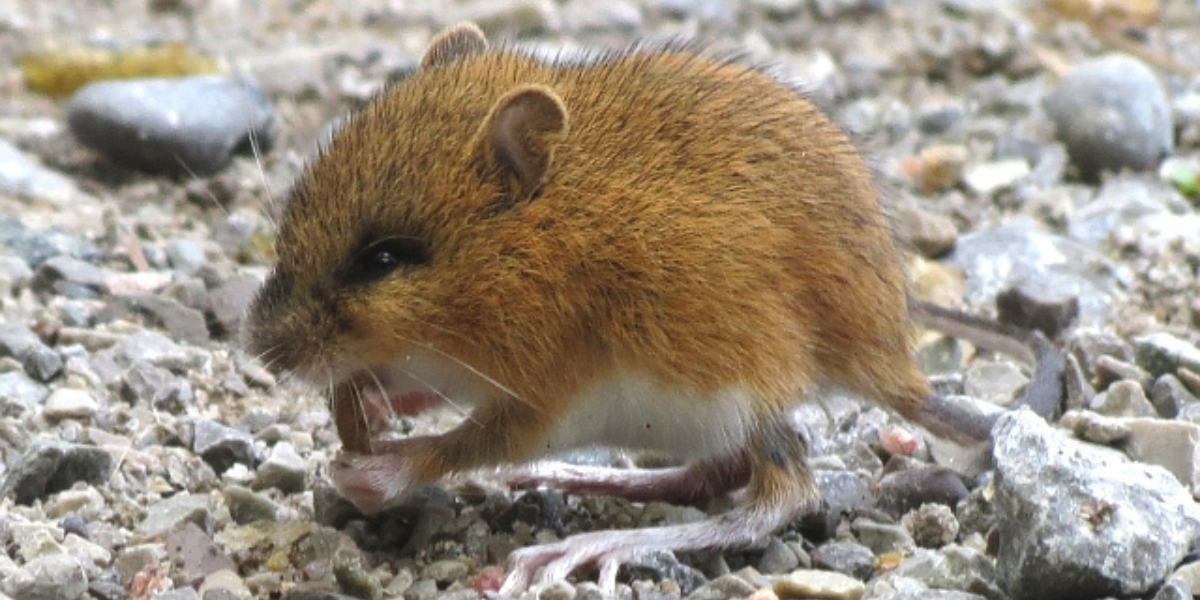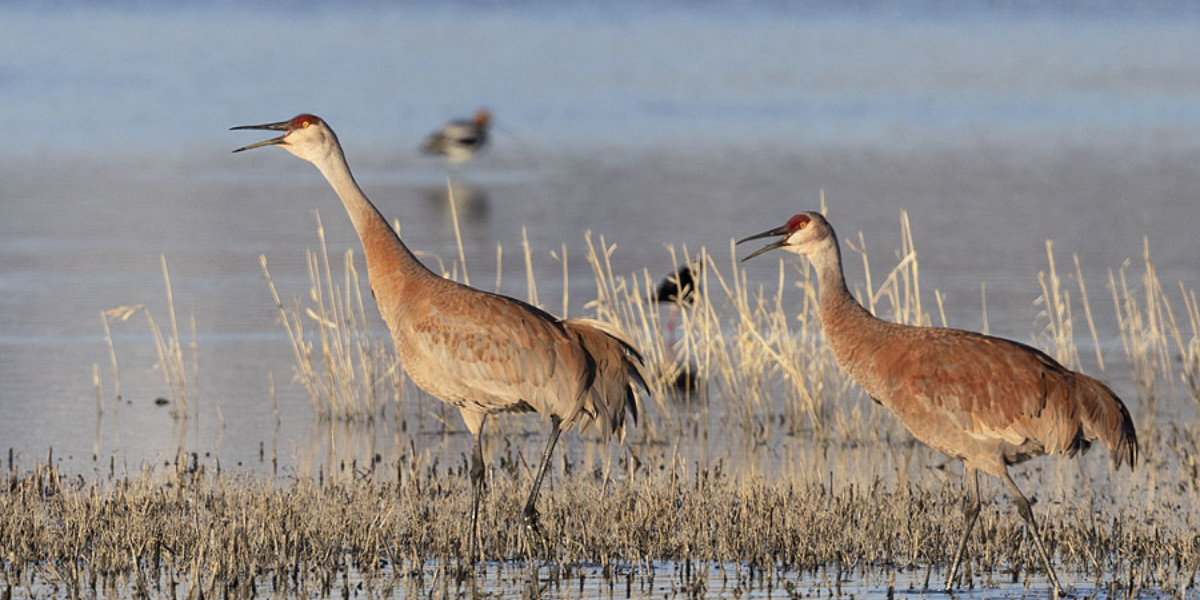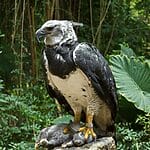10 Interesting Animals in Wisconsin – You Might Not Know
Wisconsin, located in the heart of the Midwest, boasts a diverse array of interesting animals, making it a haven for wildlife enthusiasts. From the woodlands of the Northwoods to the prairies and wetlands, the state’s varied landscapes support a rich tapestry of wildlife.
Among the interesting animals in Wisconsin, the elusive gray wolf roams the northern forests, while the majestic bald eagle soars over its lakes and rivers. The state is also home to rare and endangered species, such as the endangered Karner blue butterfly and the threatened eastern Massasauga rattlesnake.

In the wetlands, the whooping crane, one of North America’s rarest birds, finds refuge, symbolizing ongoing conservation efforts. Additionally, the endangered northern long-eared bat seeks shelter in Wisconsin’s caves and forests.
Conservation initiatives are crucial to preserving the habitats and ensuring the survival of these interesting animals in Wisconsin. Additionally, nature enthusiasts can embark on wildlife-watching adventures, encountering interesting animals such as white-tailed deer, bald eagles, and red foxes in their natural habitats.
The state’s extensive network of parks and nature reserves provides opportunities for birdwatching, with species like sandhill cranes and warblers gracing the skies.
Wisconsin’s lakes and rivers offer a haven for water-based activities, including fishing for muskies or walleyes and kayaking along scenic waterways.
Best Places to Find Out Interesting Animals in Wisconsin – (With Interesting Facts and Interesting Pictures)
Wisconsin offers a plethora of opportunities for wildlife enthusiasts to encounter interesting animals in their natural habitats. The state’s diverse ecosystems, including forests, wetlands, and waterways, are home to a variety of captivating species.
Door County, known for its scenic beauty, is a haven for birdwatchers, with migratory birds and waterfowl gracing the skies during seasonal changes.

The Northern Highland-American Legion State Forest provides a pristine setting for wildlife observation, where visitors may spot white-tailed deer, black bears, and a variety of bird species.
Devil’s Lake State Park, nestled amidst quartzite bluffs, is not only a haven for hikers but also an ideal location for glimpsing woodland creatures such as raccoons and red foxes.
For aquatic wildlife enthusiasts, the Apostle Islands National Lakeshore, with its sea caves and crystal-clear waters of Lake Superior, offers opportunities to witness a variety of water-based species, including otters, beavers, and numerous bird species.

Wisconsin Dells, while famous for its waterparks, is also surrounded by nature preserves where visitors can explore and spot interesting animals like river otters, herons, and possibly even the elusive Eastern Massasauga rattlesnake.
Whether exploring state parks, nature reserves, or the serene countryside, Wisconsin’s diverse landscapes provide numerous vantage points for encountering the state’s intriguing wildlife.
Other Interesting State Parks and Forests in Wisconsin
The Wisconsin state boasts several state parks, forests, and recreational areas that showcase its natural beauty and diverse ecosystems. These are the best places to spot a diverse range of interesting animals in Wisconsin.
- Peninsula State Park
- High Cliff State Park
- Kettle Moraine State Forest
- Governor Dodge State Park
- Interstate State Park
- Big Bay State Park
- Amnicon Falls State Park
White-Tailed Deer (Odocoileus virginianus)
The White-Tailed Deers are non-native and interesting animals in Wisconsin, flourishing in its diverse habitats. Native to North and South America, these deer are found in countries like the United States, Canada, Mexico, and parts of Central America.

In Wisconsin, their natural habitat spans wooded areas, grasslands, and agricultural landscapes. Additionally, white-tailed deer communicate through various vocalizations, including grunts and snorts.
On the IUCN red list of threatened, they are classified as “Least Concern.” However, their population is facing challenges such as habitat loss and human-wildlife conflict. Conservation efforts in Wisconsin emphasize sustainable deer management to maintain a balanced ecosystem.
Interesting Fact White-tailed deer exhibit an interesting behavior known as “flagging,” where they raise their tails to signal potential danger to other deer in the vicinity.
Striped Skunks (Mephitis mephitis)
The Striped Skunks are interesting animals in Wisconsin, and are typically found in a variety of habitats, including forests, grasslands, and suburban areas across North America.
While primarily identified by their distinctive black-and-white coloration, these skunks are also recognized for their ability to spray a pungent odor as a defense mechanism.

Striped Skunks are native to the United States, Canada, and Mexico, adapting well to both rural and urban landscapes. Striped Skunks are recognized by their distinct black fur with a white stripe running down their back, which serves as a warning signal to potential predators
On the IUCN red list of threatened species, they are classified as “Least Concern.” Fortunately, they are not facing any major conservation concerns, and their ability to thrive in diverse environments has contributed to their widespread presence in North America.
An interesting Fact: They have a unique defense mechanism – when threatened, they can spray foul-smelling liquid from glands near their tail as a deterrent.
Timber Rattlesnake (Crotalus horridus)
The Timber Rattlesnake is a fascinating and venomous serpent typically found in the eastern United States, including Wisconsin. Thriving in deciduous forests, wooded hillsides, and rocky outcrops, these snakes play a crucial role in controlling rodent populations.
These interesting animals in Wisconsin are known for their distinctive rattles, which they use as a warning signal.

Timber Rattlesnakes are native to the southwestern part of the Wisconsin state. Fortunately, these rattlesnakes are listed as “Least Concern,” on the IUCN Red List of threatened species which shows their stable population.
Despite their importance in maintaining ecological balance, their populations have faced declines due to habitat loss and persecution.
Interesting Fact: These snakesare skilled at camouflaging, blending seamlessly with their surroundings to remain elusive.
Karner Blue Butterfly (Lycaeides melissa samuelis)
The Karner Blue Butterfly is an interesting animal found primarily in the United States, with Wisconsin being a significant habitat.
These striking butterflies are typically found in open pine and oak barrens, where their larvae rely on wild lupine plants for sustenance. These butterflies can be recognized by their vibrant blue wings marked with intricate patterns.

One interesting fact about the Karner Blue Butterfly is its habitat preference. These interesting butterflies live in rare oak savannas and pine barren ecosystems, where sunlight reaches the ground, allowing lupine to flourish.
These habitats have become increasingly scarce due to habitat destruction and land development, contributing to the butterfly’s vulnerable status.
Unfortunately, due to habitat loss caused by human activities and land development, the Karner Blue Butterfly population is facing significant threats to its survival. The International Union for Conservation of Nature (IUCN) classified Karner Blue Butterfly as an “Endangered Species.”
Black Bears (Ursus americanus)
Black Bears are interesting animals in Wisconsin, are native to North America and thrive in a variety of habitats, including forests, swamps, and mountainous regions. In Wisconsin, these charismatic mammals are typically found in wooded areas, particularly in the northern part of the Wisconsin state.

Apart from the United States, black bears also inhabit Canada, Mexico, and parts of Central America. Their adaptability to diverse environments showcases a varied diet ranging from berries and nuts to small mammals and insects.
Despite their name, black bears can come in various colors, including brown, cinnamon, and even white in some rare cases. On the IUCN red list of threatened species, these interesting bears are classified as “Least Concern.”
Respecting their natural habitat and promoting coexistence helps ensure the continued well-being of these intriguing animals in Wisconsin.
Interesting Fact: They are skilled climbers and swimmers, aiding in their quest for food.
Woodland Jumping Mouse (Napaeozapus insignis)
The Woodland Jumping Mouse (Napaeozapus insignis) is a fascinating small mammal found in North America, including the woodlands of Wisconsin.
This species thrives in various forested habitats, particularly favoring areas with dense undergrowth and leaf litter where it can use its remarkable jumping abilities

These captivating creatures are primarily found in the United States and Canada. the Woodland Jumping Mouse is its unique adaptation to hibernation. Unlike many rodents, they don’t store food for the winter. Instead, they enter a state of torpor, allowing their body temperature to drop significantly to conserve energy.
The Woodland Jumping Mouse is currently listed as “Least Concern” on the IUCN Red List of threatened species. However, like many small mammals, their populations face threats from habitat fragmentation and destruction.
Interesting Fact: They can jump over 9 feet with the help of their strong legs, feet, and tail.
Whooping Cranes (Grus americana)
The Whooping Crane is a majestic bird found primarily in North America. These interesting large, white birds with black wingtips inhabit wetlands, marshes, and prairies, particularly during their breeding season in the northern parts of Canada and the United States.

Additionally, Whooping Cranes are facing severe population decline due to habitat loss and hunting, and on the IUCN red list they are listed “Endangered Species.” The conservation efforts have focused on protecting their habitats and implementing breeding programs.
Interesting Fact: Whooping Cranes have distinct, trumpeting call, which is how they got their name. The name “whooping” refers to the loud, bugle-like calls they produce.
Sandhill Crane (Antigone canadensis)
The Sandhill Crane is a majestic bird found in various habitats across North America, including Wisconsin. The natural habitats of these interesting animals in Wisconsin are wetlands, grasslands, and agricultural fields, showcasing their adaptability to a range of environments.
With a wingspan of up to seven feet, they are known for their distinctive trumpeting calls during their iconic V-shaped migration flights.

In terms of conservation, Sandhill Cranes are not currently listed as “Threatened” or “Endangered” species on the IUCN Red List. Their populations have shown resilience, with conservation efforts focusing on maintaining suitable habitats and addressing potential threats.
These captivating birds continue to be an interesting and thriving part of Wisconsin’s diverse wildlife.
Interesting Facts: Their elaborate courtship dances, involve coordinated displays of dancing, leaping, and vocalizations. This behavior contributes to their strong pair bonds.
Feral Pigs (Sus scrofa)
Feral pigs, descendants of domesticated swine gone wild, are highly adaptable and can be found in various countries, including the United States. These are one of the most interesting animals in Wisconsin.

The natural habitat of this species spans diverse environments, from forests and grasslands to wetlands and agricultural areas. These pigs are notorious for their destructive foraging habits, impacting ecosystems and posing threats to native flora and fauna.
Despite their adaptability, feral pigs are not classified on the IUCN Red List of Threatened Species. Instead, they are recognized as an invasive species in many regions. Moreover, their omnivorous diet and efficient reproduction contribute to their widespread presence.
Interesting Fact: Feral pigs have remarkable intelligence and adaptability, enabling them to thrive in different landscapes.
Slender Glass Lizards (Ophisaurus attenuatus)
The Slender Glass Lizards are native to North America, including parts of the United States like Wisconsin, is a remarkable reptiles with distinctive characteristics. Often found in grasslands, meadows, and open woodlands.
These legless lizards thrive in areas with loose soil, enabling them to burrow effectively. Despite their appearance, they are not snakes but rather belong to the lizard family.

On the IUCN red list of threatened species, these lizards are classified as “Least Concern.” However, they are marked as “Endangered Species” in Wisconsin State.
Interesting Facts: Slender Glass Lizards shed their tails as a defense mechanism, a process known as autotomy. This allows them to escape from predators and later regenerate their tails.
Frequently Asked Questions about Interesting Animals in Wisconsin
What animal is famous in Wisconsin?
White-tailed deers, American robins, Muskellunges, and Western honey bees are some famous animals in Wisconsin.
What’s Wisconsin’s national animal?
The American badger is the national animal of Wisconsin. The badger was adopted as the state animal in 1957, symbolizing the early lead miners of the state, who were nicknamed “badgers.”
What is the largest wild animal in Wisconsin?
The moose is the largest wild animal in Wisconsin.
Are mink rare in Wisconsin?
Minks are common throughout the Wisconsin.
- What Should I Do If A Koala Bites Me? Safety Guide - 2024-05-30
- Are Kangaroos Born Without Hind Legs? A Fascinating Journey - 2024-05-30
- Animals That Look Like Squirrels - 2024-05-30









